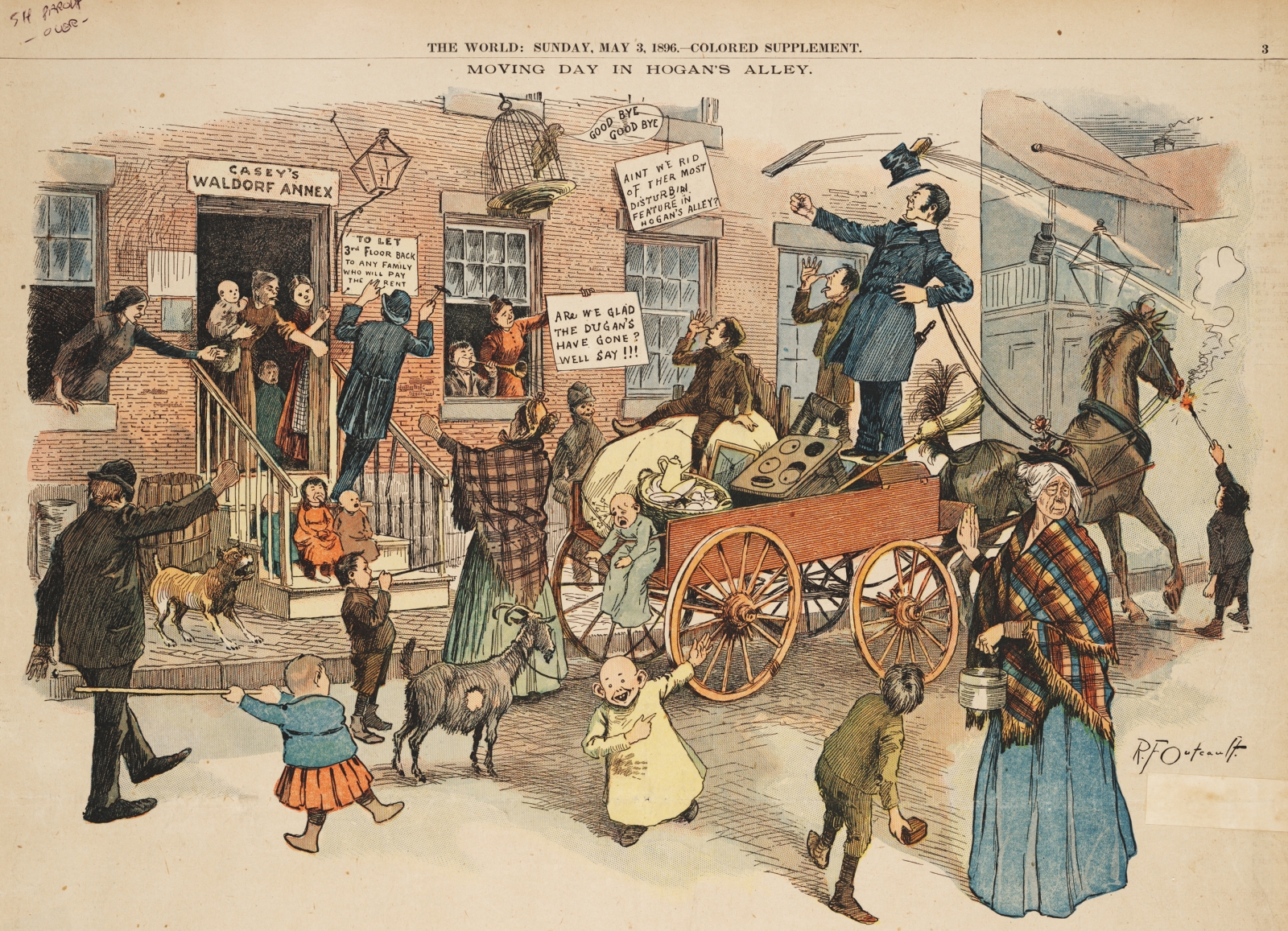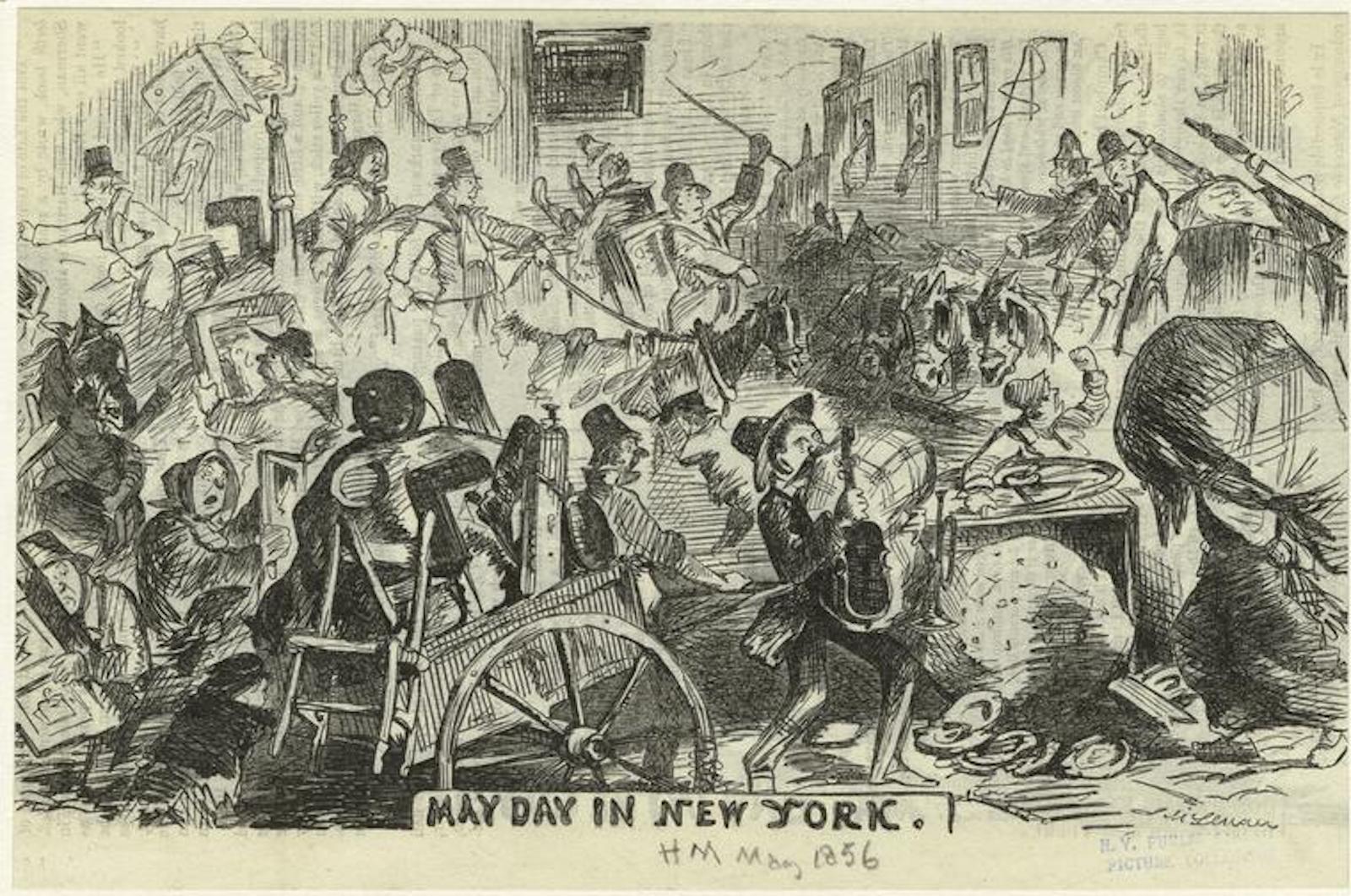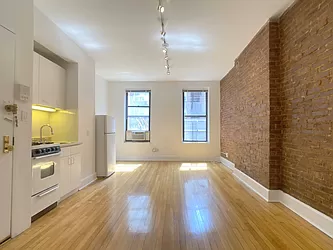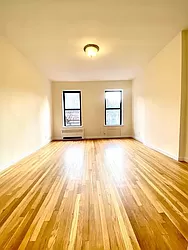Moving in NYC

This illustration titled “Moving Day in Hogan’s Alley,” was among a series of work by Richard Felton Outcault that was considered the first commercially successful newspaper comic strip. It lasted from 1863 to 1928. (Ohio State University)
Moving apartments in NYC may conjure high levels of anxiety, but as this year’s rental season peaks, Gothamites should take comfort in knowing that moving used to be much worse. Until around the turn of the 20th century, all renters in New York City had no option but to either move or stay in their homes on the exact same day. This phenomenon was called Moving Day or Rent Day and it occurred every year on May 1.
Moving Day in NYC: The Most Dreaded Day
For New Yorkers who did not renew their lease — and there were many — they needed to leave their apartment by 9 a.m. on May 1, which was when their lease terminated. As can be imagined, streets erupted in chaos as residents hauled their belongings or hired movers to move their possessions over the filthy cobblestone streets.
If maneuvering your couch up to a fourth-floor walk-up sounds terrible now, imagine doing it at the same time as your neighbors. Every year on Moving Day, men schlepped people’s possessions in horse-drawn carts and charged “extortionate rates” for their moving services.
Why May 1? Though some claim it represents the date Dutch explorer Henry Hudson and his crew set sail for Manhattan, this is actually false. The citywide Moving Day likely fell on May 1 because landlords notified tenants of the next year’s rent on Feb. 1, giving them a few months to decide whether to stay or move. Then, on that fateful day in May, “tenants could be ousted or choose to move.”
An April 1873 New York Times article described Moving Day as “the annual spectacle of a whole drove of Gothamites struggling amid pots, and pans, and pictures, and rolls of carpet … to find a new and cold home and cultivate fresh friendships … not the kind of picture to gaze on with poetic rapture.”
Tip: Use your mouse to navigate through these 360°-view Moving Day illustrations to experience the madness for yourself (best viewed on desktop).
Housing shortages throughout the rapidly developing city only made matters worse, solidifying class lines in newly emerging neighborhoods. In the dust of the Moving Day havoc, crowds of New Yorkers unable to find homes would gather each May 2 in City Hall Park.
In the late 19th century, some residents began to spend their summers cooling off in the ‘burbs. This precipitated a second moving day on October 1, when renters moved their belongings from storage to their new city pads.
By the 1920s, New Yorkers pushed back against Moving Day amid a broader fight for tenant rights. In 1920, New York passed the Emergency Rent Laws to oversee rent increases. Two years later, the moving industry urged for three separate moving days to relieve the rush. With such a quick, single-day turnover, advocates argued, some apartments were left without light and heat.
During World War II, moving companies couldn’t find enough men to work on one day. Eventually, the postwar housing shortage solidified the demise of New York’s two Moving Days.
Moving Days — Then vs. Now

“The chaos of Moving Day in New York City in 1856.” (The New York Public Library Digital Collection)
Though we’ve traded out horses and buggies for vans and trucks, New York City moves still remain stressful and potentially rage-inducing. In 1873, the New York Times described Moving Day as “a dream of torment, confusion, and expense, and landlords and real estate agents are the evil spirits that rule the day.” Today, thankfully, it is not that bad.
But just like the New Yorkers of old, we’re still willing to abandon Manhattan for more space. The same article noted how “people who are about to change will be likely to patronize Brooklyn and Jersey, to some extent.”
NYC renters have gained significant legal rights over the past two centuries, most recently bolstered with the June 2019 rent laws. Aimed to strengthen renters’ legal protections, these regulations have designated unlawful evictions a misdemeanor and required landlords to give 30 days’ notice of rent increases exceeding 5%, among other changes.
Back then, residents who couldn’t afford to buy instead turned to renting. Then, as now, the majority of New Yorkers – about 5.4 million people – rent their homes. And living here is still difficult: half of NYC residents today spend more than the recommended 30% of their income on rent.
Now, for most Manhattan and Brooklyn neighborhoods, “Moving Day” informally falls around the first of August. Renter demand is usually highest over the second and third weeks of July, in preparation for a move at the end of the month, according to a recent StreetEasy report.
And while it can be hard to find affordable movers on short notice around this time of year, at least every May 1 no longer resembles “a population flying from the plague.”
—
Read “Tips on Moving in NYC Without Losing Your Mind”
Manhattan Rentals Under $3000 Article continues below






















